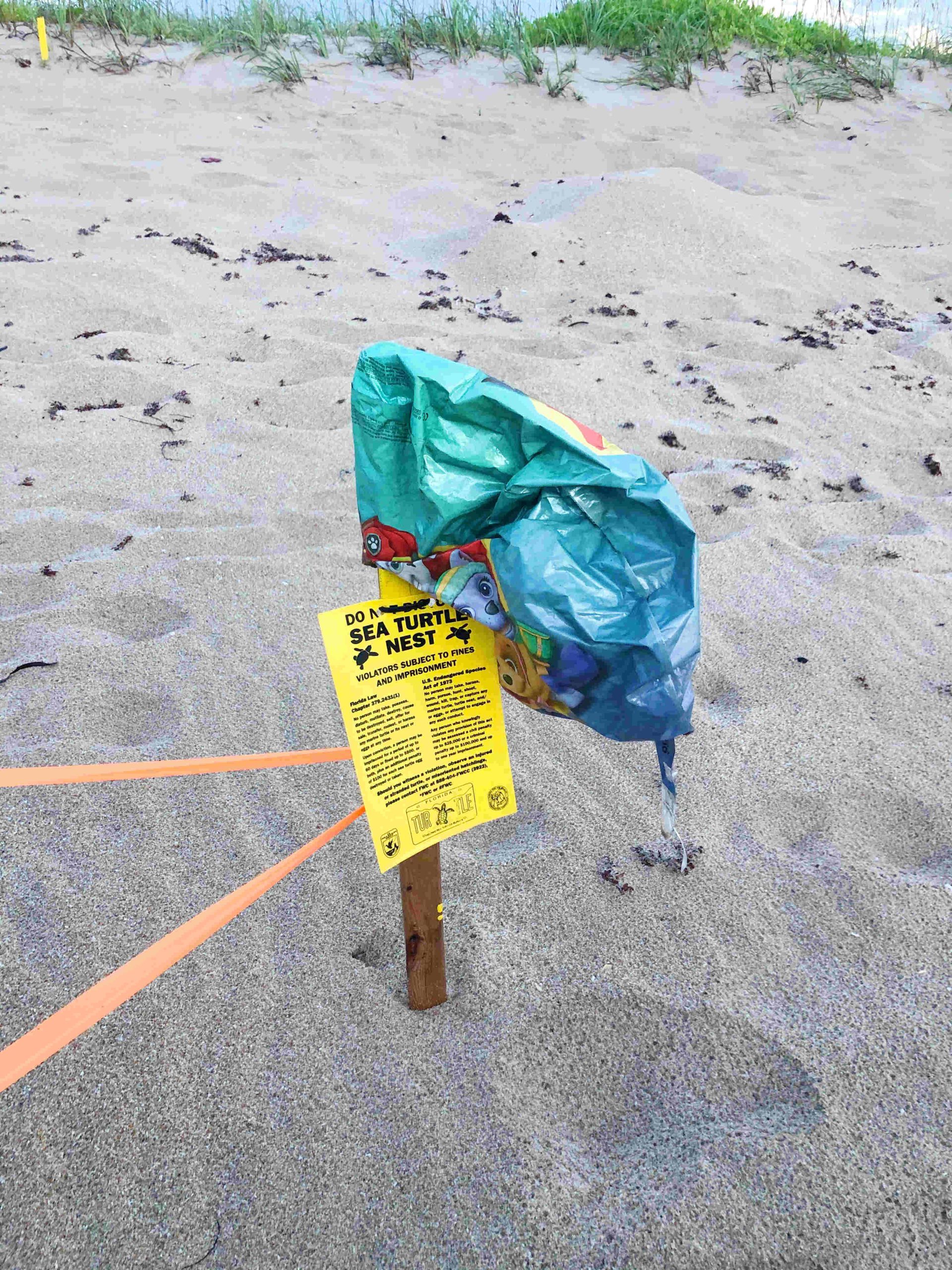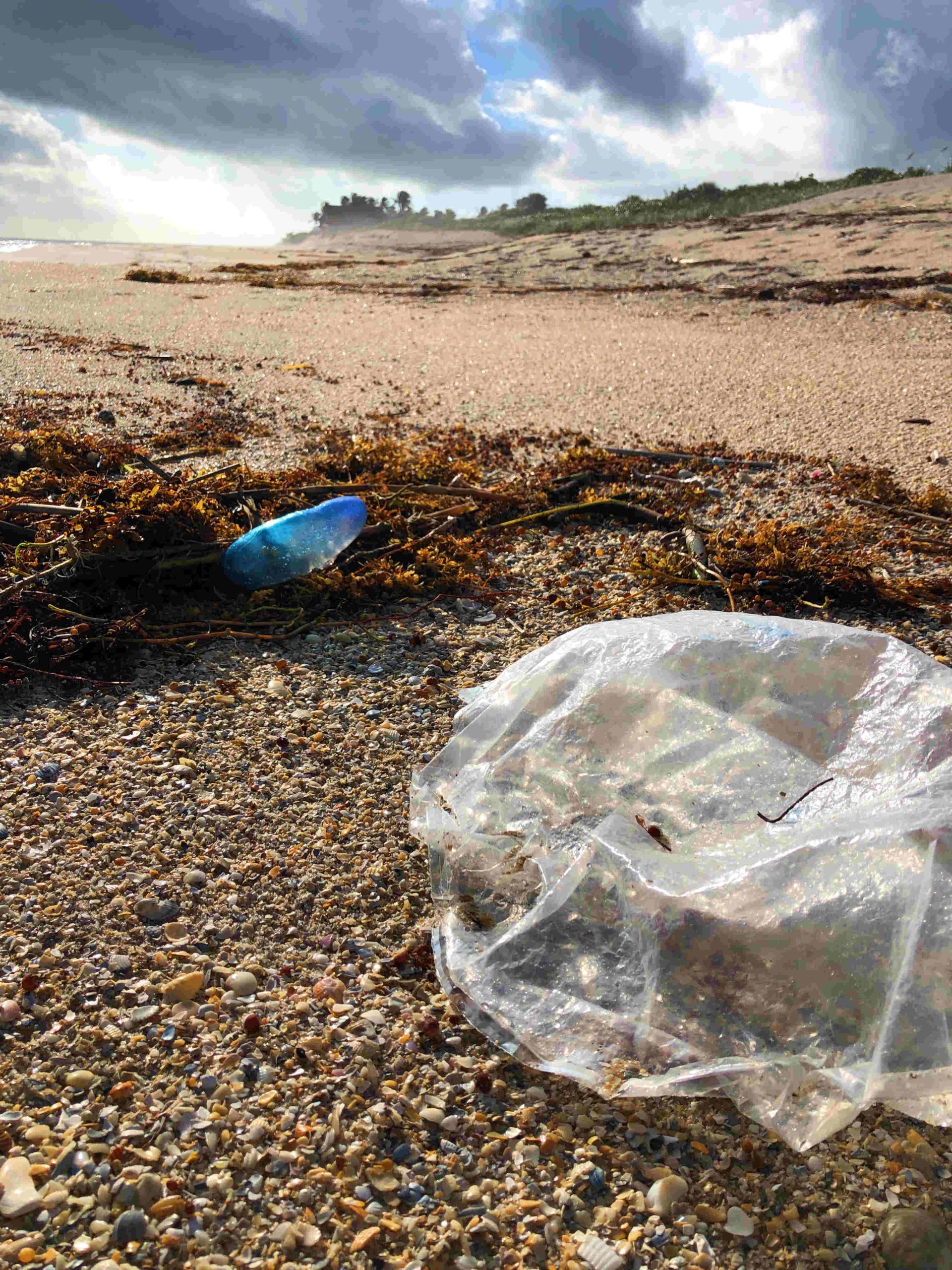Why are balloons a problem?
Did you know Florida’s protected sea turtles can mistake balloons on the beach and in the ocean for jellyfish? Please remember to properly dispose of your balloons and other trash on the beach.
The problem with marine microplastics and trash on beaches has been well-documented, but what might not be so obvious is the potential harm that can be caused by this plastic trash. Sea turtles can mistake the plastic balloons for jellyfish and try to eat them. This can lead to internal injuries. Balloons can also lead to entanglement.
Sea Turtle Nesting Season
Sea turtle nesting season is March 1 – November 15 in St. Lucie County. The problem with balloons left on the beach after parties was discussed by St. Lucie County’s Sea Turtle Friendly Beaches Work Group. Valentine’s Day, birthdays, 4th of July and other holidays are events when people might be bringing balloons to the beach. Responsible Floridians and visitors can play a role in keeping St. Lucie County’s beaches “sea turtle friendly” by packing out all items they bring with them to the beach. They can even go above and beyond by picking up trash in the area around them and disposing of these items in a proper trash receptacle.


Sea Turtle Friendly Beaches Practices
UF/IFAS has a list of 10 ways you can help conserve sea turtles (EDIS Publication WEC421):
- Comply with sea turtle lighting codes in St. Lucie County.
- Keep garbage off the beach and out of the water.
- Do not disturb nesting or hatching sea turtles or sea turtle nests.
- Protect seagrass beds.
- Remove recreational equipment and furniture from the beach at night.
- Always use designated beach walkovers or access points.
- Follow best fishing practices around sea turtles.
- Reduce pollution run-off.
- Do not drive on the beach during nesting or hatching season.
- Observe sea turtles from a safe distance when boating or jet-skiing.
St. Lucie County’s Sea Turtle Friendly Beaches Work Group
St. Lucie County’s Sea Turtle Friendly Beaches Work Group met on Tuesday February 22, 2022 to get ready for the upcoming nesting season. Several agencies are involved including the UF/IFAS Extension St. Lucie County, Code Compliance from St. Lucie County and Fort Pierce, Ecological Associates, Inc., Erosion District, In-water Research, St. Lucie County Public Information Office, Florida Master Naturalists, Manatee Observation and Education Center, St. Lucie County Aquarium, and the St. Lucie County Environmental Resources Department. These organizations have various responsibilities when it comes to sea turtle protection on our beaches and in our ocean, and this blog is a result of the discussion on balloons left on St. Lucie County’s beaches and waters.
Resources
Gioeli, K. 2022. 2022 Update on sea turtle friendly beaches in St. Lucie County. [UF Blog Post].
Gioeli, K. 2021. Proper storage of beach furniture protects sea turtles. [UF Blog Post].
Swindell, J., Ober, H., Lamont, M., and Cathy, R. 2020. Sea turtle conservation: 10 ways you can help. [UF EDIS Publication WEC421] https://edis.ifas.ufl.edu/publication/UW466
The mission of the University of Florida Institute of Food and Agricultural Sciences (UF/IFAS) is to develop knowledge relevant to agricultural, human and natural resources and to make that knowledge available to sustain and enhance the quality of human life. With offices in each of Florida’s 67 counties, UF/IFAS Extension works to bring science-based solutions to the state’s agricultural and natural resources industries, and all Florida residents.
UF/IFAS Extension programs are open to all persons without regard to race, color, sex, age, disability, religion, or national origin.
 0
0
